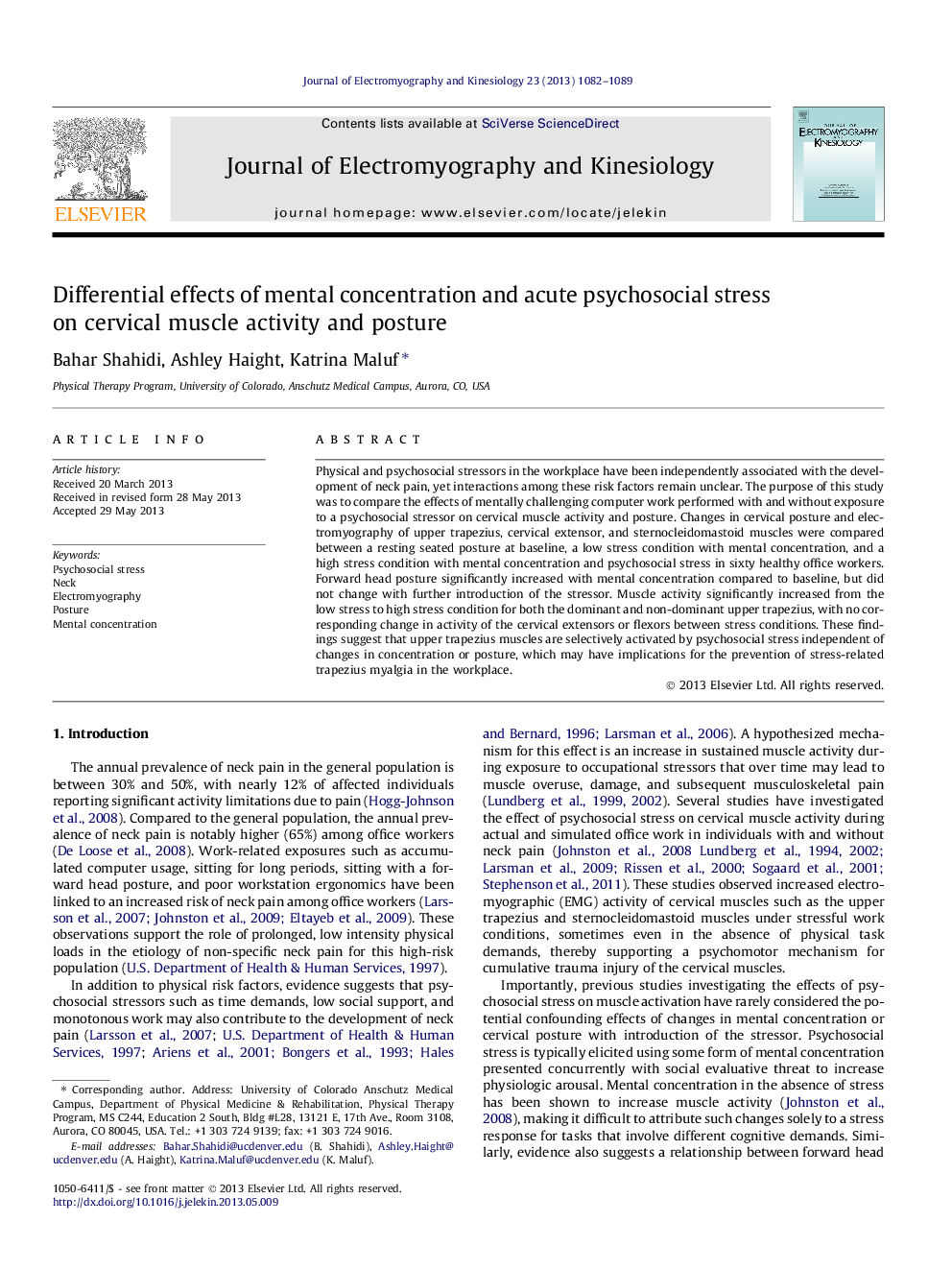| Article ID | Journal | Published Year | Pages | File Type |
|---|---|---|---|---|
| 6210526 | Journal of Electromyography and Kinesiology | 2013 | 8 Pages |
Physical and psychosocial stressors in the workplace have been independently associated with the development of neck pain, yet interactions among these risk factors remain unclear. The purpose of this study was to compare the effects of mentally challenging computer work performed with and without exposure to a psychosocial stressor on cervical muscle activity and posture. Changes in cervical posture and electromyography of upper trapezius, cervical extensor, and sternocleidomastoid muscles were compared between a resting seated posture at baseline, a low stress condition with mental concentration, and a high stress condition with mental concentration and psychosocial stress in sixty healthy office workers. Forward head posture significantly increased with mental concentration compared to baseline, but did not change with further introduction of the stressor. Muscle activity significantly increased from the low stress to high stress condition for both the dominant and non-dominant upper trapezius, with no corresponding change in activity of the cervical extensors or flexors between stress conditions. These findings suggest that upper trapezius muscles are selectively activated by psychosocial stress independent of changes in concentration or posture, which may have implications for the prevention of stress-related trapezius myalgia in the workplace.
